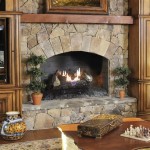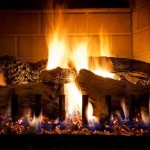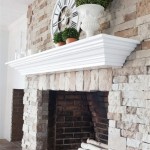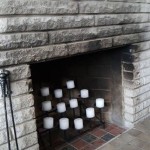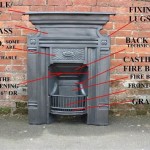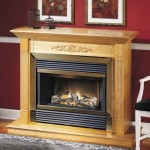Squirrel In Fireplace Chimney: Identification, Removal, and Prevention
A squirrel gaining access to a fireplace chimney is a common problem for homeowners, particularly during the colder months. Chimneys provide a sheltered environment that can appear attractive to squirrels seeking refuge from harsh weather or a suitable nesting site. Understanding why squirrels enter chimneys, the potential risks associated with their presence, and effective strategies for removal and prevention is essential for maintaining a safe and functional home.
Several factors contribute to the appeal of a chimney to squirrels. Chimneys are often perceived as safe, enclosed spaces that offer protection from predators and the elements. The brick or stone construction provides insulation, making the chimney warmer than the outside environment, especially during winter. Moreover, chimneys can provide access to other parts of the house if the damper is open or if there are other structural weaknesses.
The presence of a squirrel in a chimney can pose several problems. The most immediate concern is the noise they generate. Squirrels are active creatures, and their movements within the chimney can create scratching, scampering, and thumping sounds that can be disruptive and unsettling. Furthermore, squirrels can carry diseases and parasites that can be transmitted to humans or pets. Their droppings and urine can also create unsanitary conditions and unpleasant odors. A significant risk arises if the squirrel dies inside the chimney. Decomposition can produce foul smells and attract insects.
Squirrels building nests in chimneys presents a serious fire hazard. Nests are typically constructed from dry leaves, twigs, and other flammable materials. These materials can easily ignite if embers or sparks from the fireplace escape into the chimney. Obstruction caused by nests can also prevent proper ventilation, leading to carbon monoxide buildup inside the house, which is a potentially lethal situation.
Identifying Squirrel Activity in the Chimney
The first step in addressing a squirrel problem in the chimney is to accurately identify the presence of the animal. Several indicators can alert homeowners to squirrel activity. As previously mentioned, unusual noises coming from the chimney are a primary sign. This can include scratching, chirping, or thumping sounds, particularly during dawn and dusk when squirrels are most active. The presence of nesting material near the fireplace opening or on the roof around the chimney can be another indicator. This material can include leaves, twigs, and shredded paper or fabric.
Homeowners should carefully examine the area around the chimney for signs of squirrel droppings. Squirrel droppings are small, dark pellets that are typically found near the base of the chimney or in the fireplace itself. The presence of strong, unpleasant odors emanating from the chimney can also suggest the presence of a squirrel, especially if the animal has died inside.
Using binoculars to inspect the chimney from ground level can sometimes provide visual confirmation of squirrel activity. Look for movement near the top of the chimney or inside the flue. It is crucial to avoid attempting to climb onto the roof without proper safety equipment and experience. If there is any doubt about the presence or nature of the animal, consulting with a professional wildlife removal service is recommended.
Safe and Humane Squirrel Removal Techniques
Once a squirrel has been confirmed inside the chimney, the next step is to remove it safely and humanely. Several techniques can be employed, depending on the situation and the homeowner’s comfort level. It is important to emphasize that attempting to trap or harm the squirrel can be dangerous and may violate local wildlife protection laws. The primary goal should always be to encourage the squirrel to leave on its own.
One effective method is to create a clear path for the squirrel to exit the chimney. This can be accomplished by lowering a thick rope or strong vine down the chimney flue. The squirrel can use the rope to climb out of the chimney. The rope should be long enough to reach the bottom of the chimney and extend a few feet above the top to provide a secure grip for the animal. It is recommended to leave the rope in place for several days to give the squirrel ample opportunity to escape. Check the rope regularly to ensure it remains secure and accessible.
Another technique involves making the chimney environment less appealing to the squirrel. This can be achieved by placing bright lights or loud noises near the fireplace opening. Squirrels are typically nocturnal or crepuscular, meaning they are most active during dawn and dusk. Loud noises, such as a radio playing talk radio, or bright lights can disrupt their activity patterns and encourage them to leave. It is important to ensure that these deterrents do not pose a fire hazard. Lights should be placed at a safe distance from flammable materials and the radio should not be left unattended for extended periods.
If the squirrel has built a nest inside the chimney, removing the nest can encourage the animal to leave. However, it is crucial to proceed with caution, as the nest may contain baby squirrels. If baby squirrels are present, it is best to contact a wildlife rehabilitation center for assistance. They can provide guidance on how to safely remove the babies and reunite them with their mother or provide care until they are old enough to be released. If the nest is empty, it should be carefully removed using gloves and a dust mask to avoid contact with potential contaminants. The nest material should be disposed of properly in a sealed bag.
Preventing Future Squirrel Intrusions
Preventing squirrels from entering the chimney in the first place is the most effective way to avoid future problems. The single most important step is to install a chimney cap. A chimney cap is a protective covering that fits over the top of the chimney flue, preventing animals, debris, and rainwater from entering. Chimney caps are typically made of metal and are available in various sizes and styles to fit different chimney types. It is crucial to choose a cap that is specifically designed to prevent squirrel entry, with a mesh screen that is small enough to exclude even small animals.
Regular chimney maintenance is another essential aspect of squirrel prevention. This includes inspecting the chimney for cracks, gaps, or other structural weaknesses that could provide access points for squirrels. Any damage should be repaired promptly to prevent squirrels from exploiting these vulnerabilities. It is also important to keep the area around the chimney clear of vegetation. Overhanging tree branches can provide squirrels with easy access to the roof and chimney. Trimming branches back to a distance of at least 6-8 feet from the roof can significantly reduce the risk of squirrels gaining access.
Homeowners should also avoid attracting squirrels to their property in general. This can be achieved by removing potential food sources, such as bird feeders or pet food left outdoors. Securing garbage cans and compost bins is also important, as these can be attractive to squirrels. By making the property less appealing to squirrels, the likelihood of them seeking shelter in the chimney is reduced. Regularly inspecting the roof and chimney throughout the year can help identify potential problems early on, allowing for timely intervention and preventing future squirrel intrusions.
In situations where homeowners are uncomfortable or unable to handle the squirrel removal process themselves, or if the problem persists despite their efforts, professional wildlife removal services should be contacted. These professionals have the experience and equipment necessary to safely and humanely remove squirrels from chimneys and implement effective prevention measures. They can also identify and address any underlying structural issues that may be contributing to the problem. It is important to choose a reputable and licensed wildlife removal service that adheres to ethical and humane practices.

Squirrel In The Chimney What To Do Stuck Cavity

How To Remove Squirrel In The Fireplace Blog At Fireplacemall

Can Squirrels Get Through My Chimney

How To Get Squirrels Out Of A Chimney

How To Get A Squirrel Out Of The Chimney

Squirrels Your Chimney Cap Install Certified Techs

How To Get Squirrels Out Of A Chimney

Squirrel Removal In Massachusetts Exterminators How To Get Rid Of Gray And Flying Squirrels Batguys

Preventing Squirrels In Chimney With Squirrel Proof Cap Barnhill

Squirrels In The Chimney What Should I Do Skedaddle Humane Wildlife Control
Related Posts

